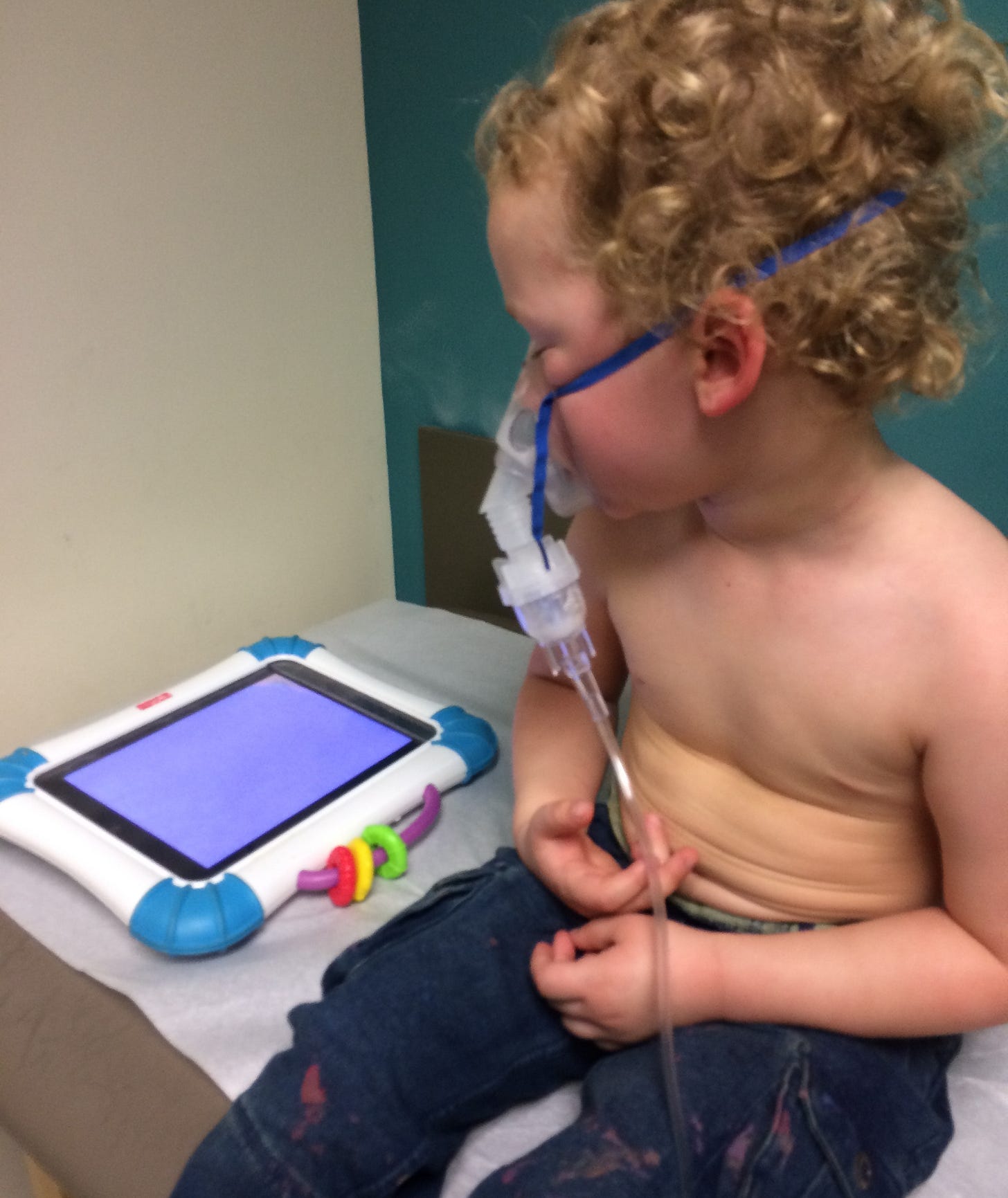In Defense of Childhood Vaccines
Why One Shot Can Save a Hospital Trip—and a Life
In Defense of Childhood Vaccines
As a doctor—and a dad—I’ve seen the fear in parents’ eyes when their child is seriously ill. I’ve also seen the frustration in a hospital filled with children suffering from something we could have prevented. Vaccines don’t just reduce disease—they spare families from pain, trauma, and loss.
And yet, in the U.S.—a country with the best tools medicine has to offer—some are pushing to scale back routine childhood vaccinations. That push is misguided, and here’s why.
Rotavirus: A Case Study in What Vaccines Actually Do
Rotavirus doesn’t get the headlines that measles or polio do—but ask any pediatrician, and they’ll tell you it was one of the most common reasons young kids ended up in the ER or hospital.
In 2006, the U.S. added rotavirus vaccination to the routine schedule for infants.
Since then, here’s what’s been prevented every single year in children under 5:
🛏️ 118,000 hospitalizations
🚑 86,000 ER visits
🏥 460,000 outpatient visits
☠️ Nearly all of the 20–60 annual child deaths due to rotavirus in the U.S.
Hospitalizations for rotavirus dropped by 75–98% compared to the pre-vaccine era. Deaths, while already rare, became exceedingly uncommon.
This isn't theoretical—it's from real surveillance and claims data over a decade.
And yet, people still ask: Why give that vaccine here? Isn't it mostly a problem in poor countries?
But before the vaccine, rotavirus was a top reason American children were hospitalized. Even when it didn’t kill, it made kids miserable: vomiting, diarrhea, dehydration, IVs in tiny arms.
So no—it’s not just for “over there.”
We use it because it protects our kids right here.
Hepatitis B: Protection That Starts at Birth
Another vaccine that often raises eyebrows is the hepatitis B vaccine, especially when given at birth.
But the evidence is clear: vaccinating newborns against hepatitis B is one of the most effective tools we have in preventing chronic liver disease.
Here’s why:
If a baby gets hepatitis B from their mother at birth, they have up to a 90% chance of developing chronic infection.
Chronic hepatitis B can lead to cirrhosis, liver failure, and liver cancer decades later.
Giving the first dose of hepatitis B vaccine within 24 hours of birth is 75–95% effective at preventing transmission—even if the mother is infected.
Completing the vaccine series provides nearly complete protection.
Because not all maternal infections are detected on time, both the American Academy of Pediatrics and CDC recommend that all medically stable infants ≥2000g get the birth dose, regardless of the mother’s status.
This universal approach has led to a >90% reduction in new hepatitis B infections in U.S. children.
And the bonus? Babies who get that birth dose are more likely to complete all their childhood vaccines on schedule. It sets the stage for long-term protection.
It’s Not Just About Death—It’s About Suffering We Can Prevent
I know some people say, “Why vaccinate against something mild like rotavirus?”
But if you’ve ever had a child with hours of uncontrollable vomiting and diarrhea, you know it’s not “just diarrhea.”
It’s scary. It’s exhausting. Sometimes, it ends in the hospital.
There’s a growing chorus of people calling for fewer vaccinations. But as a doctor—and dad—I want fewer hospitalizations. Fewer panicked ER visits. Fewer chronic diseases showing up decades later.
Because when the choice is between a simple shot and a sick child, I know which one I’ll take every time.
References
Newall AT, Leong RN, Reyes JF, et al. Rotavirus Vaccination Likely to Be Cost Saving to Society in the United States. Clin Infect Dis. 2021;73(8):1424-1430. doi:10.1093/cid/ciab442
Getachew HB, Dahl RM, Lopman BA, Parashar UD. Rotavirus Vaccines and Health Care Utilization for Diarrhea in US Children, 2001 to 2015. Pediatr Infect Dis J. 2018;37(9):943-948. doi:10.1097/INF.0000000000001988
Cortes JE, Curns AT, Tate JE, et al. Rotavirus Vaccine and Health Care Utilization for Diarrhea in U.S. Children. N Engl J Med. 2011;365(12):1108-17. doi:10.1056/NEJMoa1000446
Desai R, Curns AT, Steiner CA, et al. All-Cause Gastroenteritis and Rotavirus-Coded Hospitalizations Among US Children, 2000-2009. Clin Infect Dis. 2012;55(4):e28-34. doi:10.1093/cid/cis443
Leshem E, Moritz RE, Curns AT, et al. Rotavirus Vaccines and Health Care Utilization for Diarrhea in the United States (2007–2011). Pediatrics. 2014;134(1):15-23. doi:10.1542/peds.2013-3849
Tucker AW, Haddix AC, Bresee JS, et al. Cost-effectiveness Analysis of a Rotavirus Immunization Program for the United States. JAMA. 1998;279(17):1371-6. doi:10.1001/jama.279.17.1371
Nolt D, O'Leary ST, Aucott SW. Risks of Infectious Diseases in Newborns Exposed to Alternative Perinatal Practices. Pediatrics. 2022;149(2):e2021055554. doi:10.1542/peds.2021-055554
Thomas DL. Global Elimination of Chronic Hepatitis. N Engl J Med. 2019;380(21):2041-2050. doi:10.1056/NEJMra1810477
Badell ML, Prabhu M, Dionne J, Tita ATN, Silverman NS. Society for Maternal-Fetal Medicine Consult Series #69: Hepatitis B in Pregnancy: Updated Guidelines. Am J Obstet Gynecol. 2024;230(4):B2-B11. doi:10.1016/j.ajog.2023.12.023
Elimination of Perinatal Hepatitis B: Providing the First Vaccine Dose Within 24 Hours of Birth. Pediatrics. 2017;140(3):e20171870. doi:10.1542/peds.2017-1870




Thanks, Doc. Your writing is super valuable.
I simply cannot believe all the cement head morons and fools in this country that think they know better than science that’s been proven for *generations* in some cases and the knowledge of actual medical professionals. Instead they choose to get their medical advice from crackpots like RFK and well-known medical expert Jenny McCarthy (?).